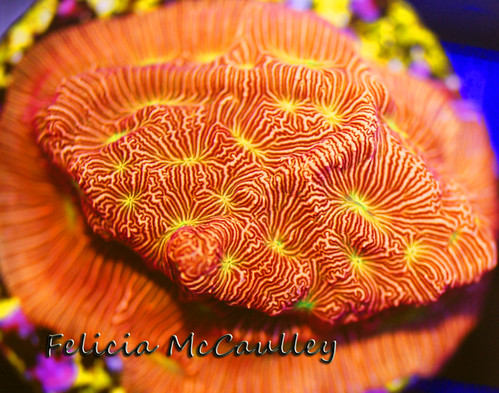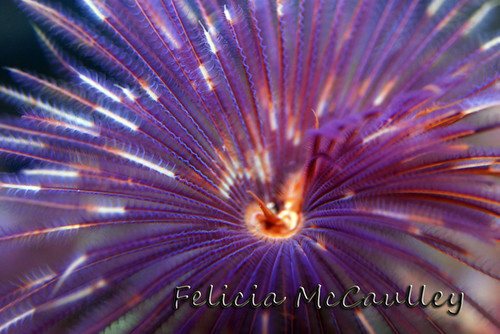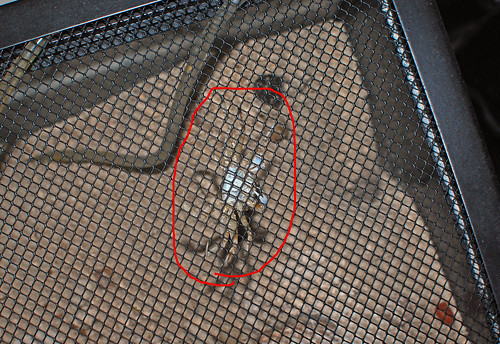Mar 22, 2012
Mar 15, 2012
The Crabitat
Over summer vacation this year my family went to Kitty Hawk, North Carolina on the Outer Banks. We noticed thousands of small holes in the sand and wondered what creature made them. One night we took a walk down the beach with flashlights and our question was answered. The holes were made by burrowing crabs the locals called "ghost crabs" (apparently great fishing bait).
Being an aquarist, I immediately started planning an aquarium, or paludarium, rather, for my potential new subjects. It was clear to me that these crabs, though spending time in the surf at night, would die in a normal aquarium without access to deep, dry sand in which to burrow. The crabs spend the day in their safe burrows and scavenge the beach at night. They wet their gills in the water each night to breathe.
I wouldn't recommend trying this at home. These crabs make terrible pets! They're the most cryptic pet I've ever had; I've gone months without seeing any of them at all. The only indication I have that they are alive is their ever-changing network of holes and ant farm-like tunnels. They're so fast, even if I do see one, it's only for a millisecond before it dashes into its burrow. It's also not recommended to harass them or take them from the beach, as they're a very important part of the ecosystem. It's illegal to even catch them unless you have a fishing license.
Despite all these thoughts, before the end of my August 2011 family vacation I decided to bring home four Ghost Crabs in a cooler with a few inches of beach sand and set to work on a new paludarium for them right away. I glued a short, perforated baffle (aka Lee's aquarium dividers) on the left side, and a tall solid barrier on the right side of a 20 gallon aquarium, dividing it into thirds. The first baffle reaches three quarters of the way to the top of the aquarium, and the second baffle is only about six inches tall.
On the floor of the paludarium I put a base of large river pebbles and live rock to help keep the baffles from moving.
I filled the rest of the right side with about 75 pounds of dry aragonite sand (NOT silicate sand which is basically tiny shards of sharp glass that will lacerate the crabs' gills and mouthparts). This was annoyingly expensive, and I had to keep going back to the local fish store for more sand. Between the two baffles is an incline made of pebbles, sand, and live rock. On the left side is the water, which I keep at 1.026 specific gravity.
Filtration (or lack thereof) is a small Via Aqua pump with a tube pumping water into the middle section of the baffles. The water runs through the sand and liverock before running back into the watery side of the tank. While building the tank, I quickly noticed that some water slowly leaked into the dry sand side of the tank. I didn't want water on this side of the tank, so I had to figure out a way to pump the water out. I had an extra Aqualifter pump, so I attached an airstone the suction side and buried it under the pebbles on the dry side. It is more than sufficient in pumping the water out of the dry side as quickly as it seeps in. It probably also helps with biological filtration. No other equipment is needed. These crabs are subtropical and prefer ambient room temperature.
My ghost crabs have now been living in captivity for over 6 months and have doubled in size. This photo next to my hand was taken today.
Ghost Crabs are similar to the brackish Uca sp. fiddler crabs that many people keep as pets, except for the burrowing and the cryptic, nocturnal habits. I was never able to figure out exactly what species these are, but they're probably Ocypode quadrata. At first I thought there were two separate species of crabs on the beach, but I believe now that the smaller crabs with sand-like patterns are juveniles, and the larger, smooth crabs are adults. The largest specimens we saw had a 2+ inch carapace and were over 4 inches across including the legs. Being scavengers, these crabs will eat almost anything. I give them crab pellets, thawed frozen shrimp, and thawed frozen fish. They seem to be fairly hardy given the right habitat, and aren't too picky about salinity changes or water quality.
Even though they're not very interesting pets, I still enjoy having them and learning about them. Eventually, I'd like to add a wavemaker or dump bucket to the left side of the "crabitat" to simulate the real ebb and flow of waves.
Being an aquarist, I immediately started planning an aquarium, or paludarium, rather, for my potential new subjects. It was clear to me that these crabs, though spending time in the surf at night, would die in a normal aquarium without access to deep, dry sand in which to burrow. The crabs spend the day in their safe burrows and scavenge the beach at night. They wet their gills in the water each night to breathe.
I wouldn't recommend trying this at home. These crabs make terrible pets! They're the most cryptic pet I've ever had; I've gone months without seeing any of them at all. The only indication I have that they are alive is their ever-changing network of holes and ant farm-like tunnels. They're so fast, even if I do see one, it's only for a millisecond before it dashes into its burrow. It's also not recommended to harass them or take them from the beach, as they're a very important part of the ecosystem. It's illegal to even catch them unless you have a fishing license.
Despite all these thoughts, before the end of my August 2011 family vacation I decided to bring home four Ghost Crabs in a cooler with a few inches of beach sand and set to work on a new paludarium for them right away. I glued a short, perforated baffle (aka Lee's aquarium dividers) on the left side, and a tall solid barrier on the right side of a 20 gallon aquarium, dividing it into thirds. The first baffle reaches three quarters of the way to the top of the aquarium, and the second baffle is only about six inches tall.
On the floor of the paludarium I put a base of large river pebbles and live rock to help keep the baffles from moving.
I filled the rest of the right side with about 75 pounds of dry aragonite sand (NOT silicate sand which is basically tiny shards of sharp glass that will lacerate the crabs' gills and mouthparts). This was annoyingly expensive, and I had to keep going back to the local fish store for more sand. Between the two baffles is an incline made of pebbles, sand, and live rock. On the left side is the water, which I keep at 1.026 specific gravity.
Filtration (or lack thereof) is a small Via Aqua pump with a tube pumping water into the middle section of the baffles. The water runs through the sand and liverock before running back into the watery side of the tank. While building the tank, I quickly noticed that some water slowly leaked into the dry sand side of the tank. I didn't want water on this side of the tank, so I had to figure out a way to pump the water out. I had an extra Aqualifter pump, so I attached an airstone the suction side and buried it under the pebbles on the dry side. It is more than sufficient in pumping the water out of the dry side as quickly as it seeps in. It probably also helps with biological filtration. No other equipment is needed. These crabs are subtropical and prefer ambient room temperature.
My ghost crabs have now been living in captivity for over 6 months and have doubled in size. This photo next to my hand was taken today.
Ghost Crabs are similar to the brackish Uca sp. fiddler crabs that many people keep as pets, except for the burrowing and the cryptic, nocturnal habits. I was never able to figure out exactly what species these are, but they're probably Ocypode quadrata. At first I thought there were two separate species of crabs on the beach, but I believe now that the smaller crabs with sand-like patterns are juveniles, and the larger, smooth crabs are adults. The largest specimens we saw had a 2+ inch carapace and were over 4 inches across including the legs. Being scavengers, these crabs will eat almost anything. I give them crab pellets, thawed frozen shrimp, and thawed frozen fish. They seem to be fairly hardy given the right habitat, and aren't too picky about salinity changes or water quality.
Even though they're not very interesting pets, I still enjoy having them and learning about them. Eventually, I'd like to add a wavemaker or dump bucket to the left side of the "crabitat" to simulate the real ebb and flow of waves.
Feb 22, 2012
Feb 21, 2012
NCPARS That Fish Place Winter Frag Swap 2012

This year's North Central Pennsylvania Aquarium Reef Society and That Fish Place Winter frag swap was a great success! If you missed it, join us on April 28th at the Williamsport, PA high school for our Spring frag swap with special guest Bob Fenner.





Enjoy the rest of the photos here: http://www.flickr.com/photos/feliciamccaulley/sets/72157629204066315/
Subscribe to:
Posts (Atom)










